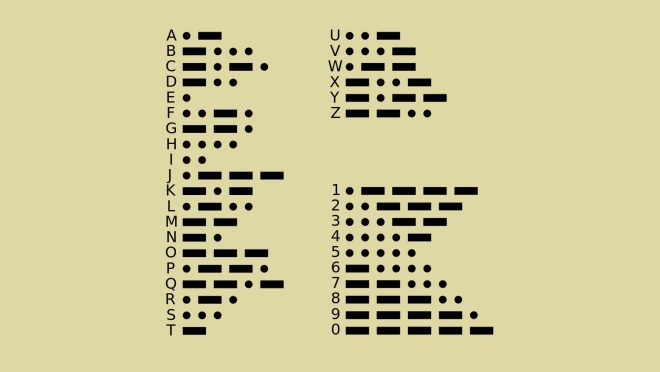Morse Code: A timeless language of dots and dashes
Morse Code: A timeless language of dots and dashes

Have you ever watched a film where someone starts blinking a torch in a strange pattern or tapping on a wall as if they are trying to send a message? Maybe in Stranger Things, when they used Christmas lights to communicate with the Upside Down?
It looks mysterious, clever, and definitely cool, and I’ve always found myself wondering: what exactly are they doing? How does it actually work?
It turns out this code is very real. As many of us know, it’s called Morse code, and has been around for nearly two centuries. It’s a telecommunication method that encodes text characters into two types of signals: dots and dashes.
Morse code was invented in the 1830s by American inventor Samuel Morse and his colleague Alfred Vail. Together, they developed it for use with the electric telegraph, which was a game-changer in communication at the time. People could send messages across vast distances simply by tapping out patterns of sound or light.
Morse code uses a series of dots and dashes to represent the 26 letters of the English alphabet (A to Z), one accented letter (É), numbers from 0 to 9, and a few punctuation marks. It makes no distinction between capital and lowercase letters, treating them the same. This was quite an achievement for its time, arriving long before phones, email, or instant messaging were even imagined.
Morse code might seem confusing at first glance, but the idea behind it is actually quite simple. Each letter of the alphabet has its own pattern of dots and dashes, represented in sound as short and long beeps.
For example, A is dot-dash, while B is dash-dot-dot-dot. These signals can be sent in many ways: tapping on a surface, flashing a light, beeping a sound, or even blinking your eyes. You don’t need to speak or type. That’s why it’s still used in emergencies by people who rely on alternative ways to communicate. Morse code isn’t just something from old history books or dramatic film scenes—it’s very much real and practical.
Morse code is still alive in small but practical ways all around us. It remains a valuable communication tool in aviation and maritime navigation. Radio beacons, also known as non-directional beacons (NDBs), transmit Morse-coded identifiers. Amateur radio operators, or ham radio users, frequently use Morse code for long-distance or low-signal communication because it is simple and effective.
It’s also used in assistive technologies, allowing people with severe physical disabilities to communicate through devices that interpret eye blinks or finger taps into Morse code. In emergencies, the universal distress signal SOS can be sent using light, sound, or tapping when no other method is possible.
I haven’t learned Morse code myself properly but I find it fascinating. You don’t need expensive technology or even a pen—just rhythm and memory. You can use it to communicate in situations where speaking is urgent but impossible. Honestly, that kind of resourcefulness is impressive.
Anyway, …. .- …- . / ..-. ..- -.


